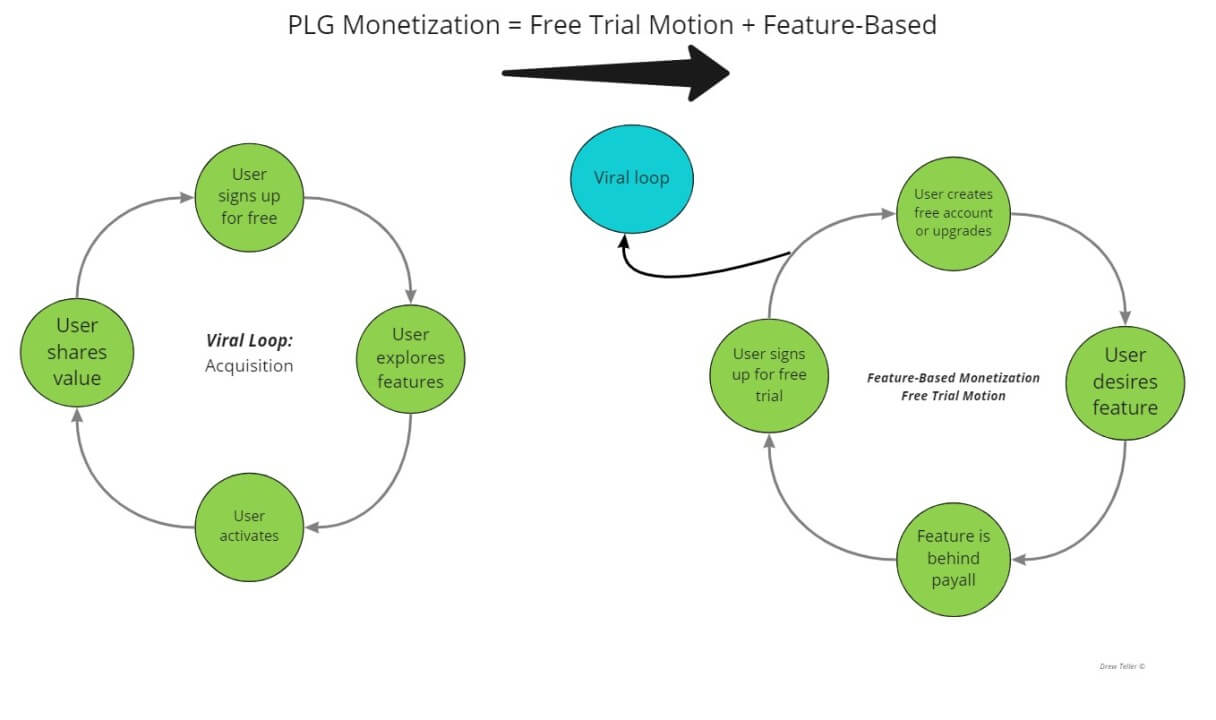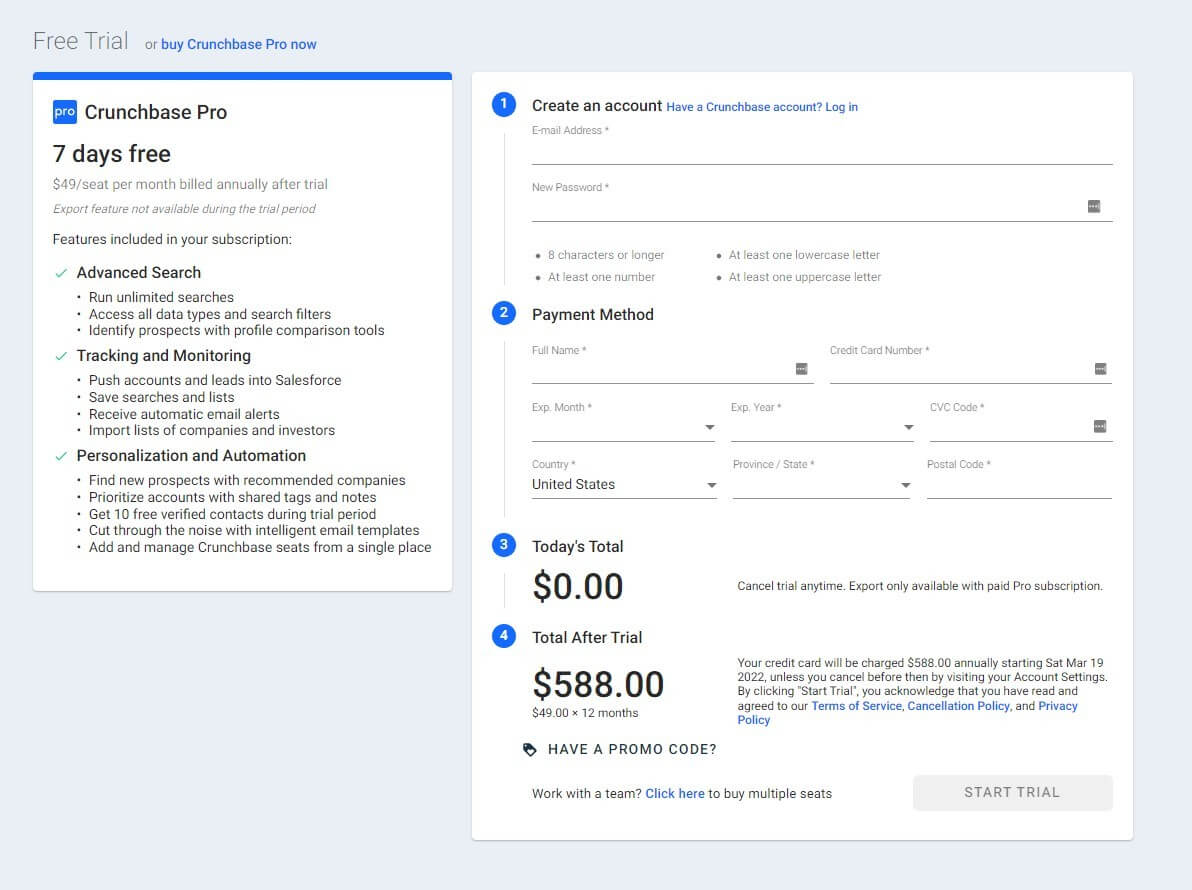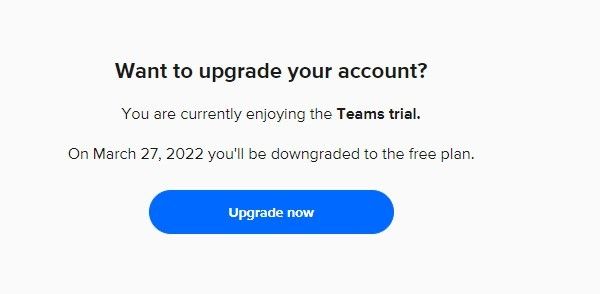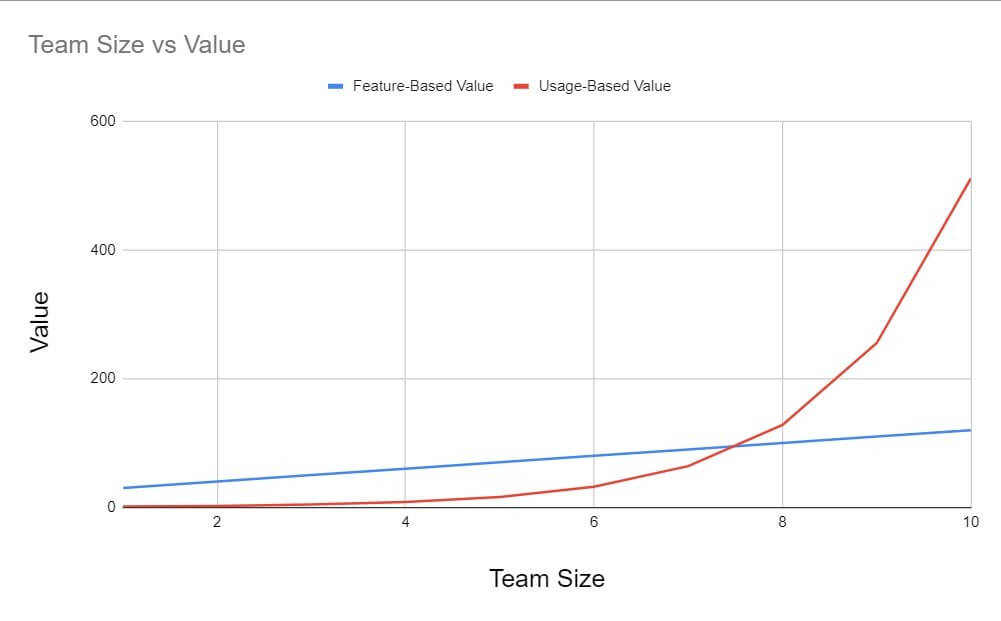With feature-based free trial motions, retention is seen after time to value is achieved.

Free trial vs freemium
The classic debate in SaaS Product-Led Growth.
There are pros and cons of each strategy, however, what I want to see written more is how free trial and freemium cannot bring success without considering the monetization strategy (usage vs feature-based pricing) and the UX of the monetization motion.
Let's break these down.
Free trial is when a SaaS company offers a user its product's premium features, usage, and services for free for a finite amount of time. Typically 14-30 days. After the time window, the user reverts to a free plan with limited features, usages, and services, or can upgrade/stay on the paid plan.
Freemium is when a SaaS company offers full rights to most of its product features and services for as long as you want. Typically, there will be a paid plan in tiers where a user can upgrade to a premium plan where they can access an increased amount of services.
For a real breakdown of what's best, check out this article by Elena Verna (Reforge).
However, I want to add a layer to this conversation: how your PLG monetization (pricing) strategy should influence whether you go usage-based vs feature-based.
Many leaders in SaaS are talking about how the future of PLG is usage-based monetization.
Most of the usage-based PLG SaaS companies like Miro, Twillio, Netlify, etc have freemium self-serve strategies, as opposed to free trial strategies. However, I’m noticing something unique starting to come out of the product-led monetization strategies. Free trial is feature-based, not usage-based dominant. Why?
Let's look at two examples.
Calendly and Crunchbase both have strong PLG monetization models built on feature-based pricing through free trial motions.
The free trial motion is incredibly important to their monetization models, however, each of these companies' choices of UX is polar opposites.
Crunchbase
- User signs up for free
- User wants to explore a list of companies
- User hits paywall
- User asks to upgrade to Pro on Free Trial
- User wants to download/export a list of companies
- User hits paywall - must be paying subscription to export (Crunchbase found out that users REALLY want this feature)
- User pays annually (Crunchbase also knows this value is very high which is why they only allow annual payment, not monthly)
- Notice (below) how clear their UX/UI is around exactly how much you’re paying and when

Calendly
- User signs up for the freemium tier
- User starts using features, creating multiple events, and connecting multiple email connections (core use cases)
- User receives an email informing that they have been on the Teams trial (free trial of paid plan)
- User upgrades to Teams (paid) tier
- Notice (below) that you don't even know that you’re on a 'Teams trial' until you go to your billing or receive your 7-day email notifying your revoked subscription trial.

The major difference in both of these UX is that Crunchbase is very clear about what features they put behind the paywall and the free trial plan that you are on.
Calendly secretly puts you on a paid plan trial even though you select the freemium plan. Calendly is a free trial SaaS company disguised as freemium.
Even though usage-based monetization typically has compounded revenue effects on a company's bottom line, these SaaS companies are typically more collaborative and require large team inputs to generate increasing value. With feature-dominant players like Calendly and Crunchbase, there is a saturation point in which adding more team players plateaus the value-growth curve. See below:

There are exponential value effects that come from usage-based value strategies as the team size grows, however, the value starts off smaller than feature-based value with smaller team sizes.
TLDR;
If someone asks whether free trial or freemium is better, respond with: "What kind of monetization strategy are you leading with?"
Don't chase after the money. Understand the user psychology of your product, develop the growth strategy, and then experiment with pricing models.
The monetization strategy of feature vs usage-based pricing should be a major variable in deciding whether to go free trial or freemium.
PLG monetization that = usage-based pricing = freemium self-serve strategy
- Dropbox, Airtable, Fastly, Twillio, Netlify, Miro, etc
PLG Monetization that = feature-based pricing = free trial self-serve strategy
- Atlassian, Docusign, Drift, Elastic, Calendly, Crunchbase, etc.
(Of course, this is not a one size fits all and many PLG companies actually have a combination of both)
Thanks for reading! :)



 Follow us on LinkedIn
Follow us on LinkedIn



